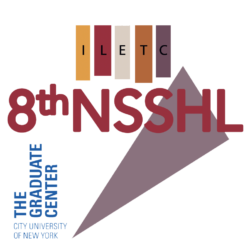To watch the presentation, enter password nsshl2021 below:
4 Replies to ““Ahora cuéntamelo tú”: Narrative Abilities in School-Age Heritage Spanish (Javier Jasso, Cecilia Perez)”
Comments are closed.


8th National Symposium on Spanish as a Heritage Language
Thursday, May 13th–Saturday, May 15th, 2021
To watch the presentation, enter password nsshl2021 below:
Comments are closed.
Javier, Cecilia, thanks for a very stimulating talk!
I have a couple of questions/comments:
1. Your 2nd graders seems to have quite more exposure to Spanish than the Kindergarteners and the 4th graders. To what extent do you think this may have affected the results obtained when measuring their PGU? (or even PGU within this certain age group)?
2. This is more of a reflection to open up discussion more than an actual question, but here it goes! 🙂 –> One of the main differences between your study and that of Castilla-Earls et al. (2019) is that theirs analyzed linguistic development longitudinally, while yours -if I’m not mistaken- does so cross-sectionally. Do you think this could have had an affect on the results? I have an inkling that Castilla-Earls et al. might’ve found age/exposure effects as a result of individuals’ decreased activation/input in the HL over time, however, this might not always be the case for individuals who could be enrolled in higher grades (for example in 2nd/4th grade in your cross-sectional study) and be recently emigrated or come from communities/families that are very Spanish-dominant, or for those who “thresholds” of language use might be higher/lower to start with. Can we overcome this potential skewing of the data with cross-sectional analysis, and if so, how?
Again, this is not a criticism of your study at all (which I think is asking a lot of great questions!!). It is something that I have come across in my own work and I’ve always gotten questions about, so I wanted to hear your take on it 🙂
Many thanks for reading and once again, congratulations!
Thanks for your talk! It was very thought-provoking.
#1: One of the points that most captured my attention was the negative correlation between PGU and SI in the earlier grades. You comment on this towards the end of the presentation, but I wonder if you could give us a little bit more detail here.
What types of “errors” did you see most often from older children who are beginning to use more subordination?
#2: Can you talk a little bit more about PGU? I’m certainly not an expert of child bilingualism research, but I am somewhat familiar with the area, and I’ve never seen this term before. How is it calculated? Is it tied to language standards or some objective measure of the input that children receive?
Concerning David’s comment #1, I was wondering the same thing, but I was thinking that perhaps what we have here is an effect of children with more ability/fluency creating also more subordination. This is all the most probably since it looks like IS was calculated as a total average of number of clauses/number of utterances per narrative (if calculated per each utterance we would have several IS measures per subject, and could enter subject as a random variable in the model, which would allow to test this idea).
I was also wondering if you could elaborate a little on what you consider a utterance, since you talk of MLUw, which would be rather a T-unit, then talk of C-unit (which seem again a spoken T-unit). I was also wondering how difficult it would be to segment this way (which you do have to do for your measurements) and if for MLUw or T-units you could use instead intonational units. It seems that the constant PGU could be a factor of oral mode, so if incomplete T-units that are fine oral units are taken into account, that may distort results. Just some food for thought, it is hard to measure grammaticality in oral discourse, let alone children’s oral discourse.